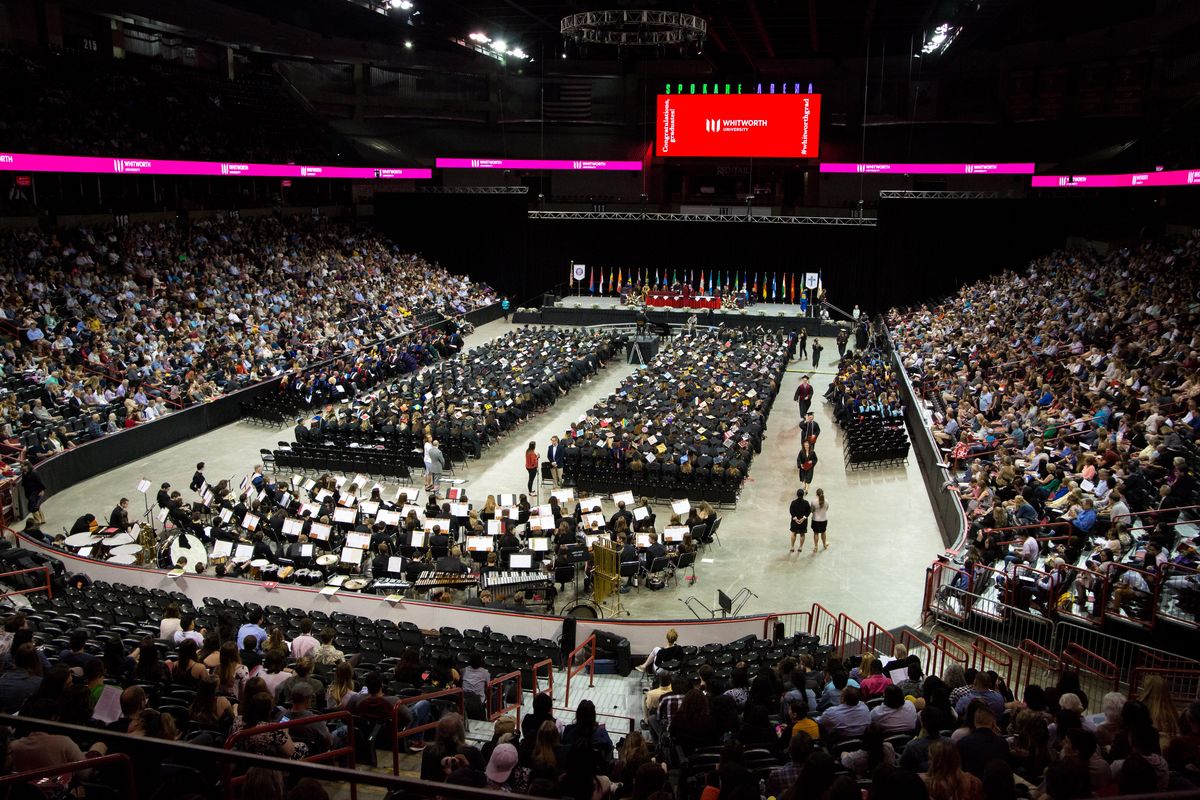Then and Now: The 1960 state Democratic convention at Spokane Memorial Coliseum
The Spokane Veterans Arena, which replaced the Spokane Memorial Coliseum in 1995, accommodates the largest community events, including the Whitworth University commencement ceremony seen here on May 19, 2019. Before the 1954 Coliseum, there were few venues for large events. (Libby Kamrowski / The Spokesman-Review)Buy a print of this photo
In May of 1960, two-term Republican President Dwight Eisenhower was on his way out and his vice president, Richard Nixon, was on the campaign trail for the Republicans.
On the Democratic side, candidates, mostly U.S. senators, looked for support. On May 27, Washington’s Sen. Warren “Maggie” Magnuson, Sen. Henry “Scoop” Jackson, and Gov. Albert Rosellini welcomed three presidential hopefuls to Spokane at the state Democratic convention, a meeting the size of which the city had rarely seen. Almost 2,400 people, including 1,843 of whom had paid for the $10-a-plate dinner, squeezed into the Spokane Memorial Coliseum. Some carried “Jackson for Vice President” signs, encouraging the candidates to pick Washington’s junior senator for VP.
One of the reasons such large gatherings were rare in Spokane: Before the Coliseum was built in 1954, there was hardly space to hold such a crowd. Large gatherings took place at the National Guard Armory, the Masonic Hall or the fairgrounds.
The city had discussed a publicly owned civic auditorium for more than 40 years before voters finally approved a $2 million bond issue in 1950. Construction began in 1953. Once completed, the Coliseum was easily reconfigured for speeches, plays, athletic events and parties. The building could hold hockey games, symphony concerts, church services and trade shows.
The 1960 political convention drew U.S. Senate Majority Leader Lyndon B. Johnson of Texas. He was welcomed with a hillbilly string band and blasted GOP leadership in a fiery stump speech.
Massachusetts Sen. John F. Kennedy, only 42 years old, was greeted earlier by more than 300 high school and college supporters waving banners and signs at the Davenport Hotel. He told the Coliseum crowd that 1960 was the most important election since 1932.
Arriving late, Missouri Sen. Stuart Symington told the crowd, “I am convinced that if we get the Nixon voting record before the people, we can handily win the victory.”
The final convention vote in Spokane favored Kennedy and Illinois Gov. Adlai Stevenson, who didn’t attend the convention in Spokane.
Kennedy was elected president on Nov. 8, 1960, though Nixon did not concede until the following day.

